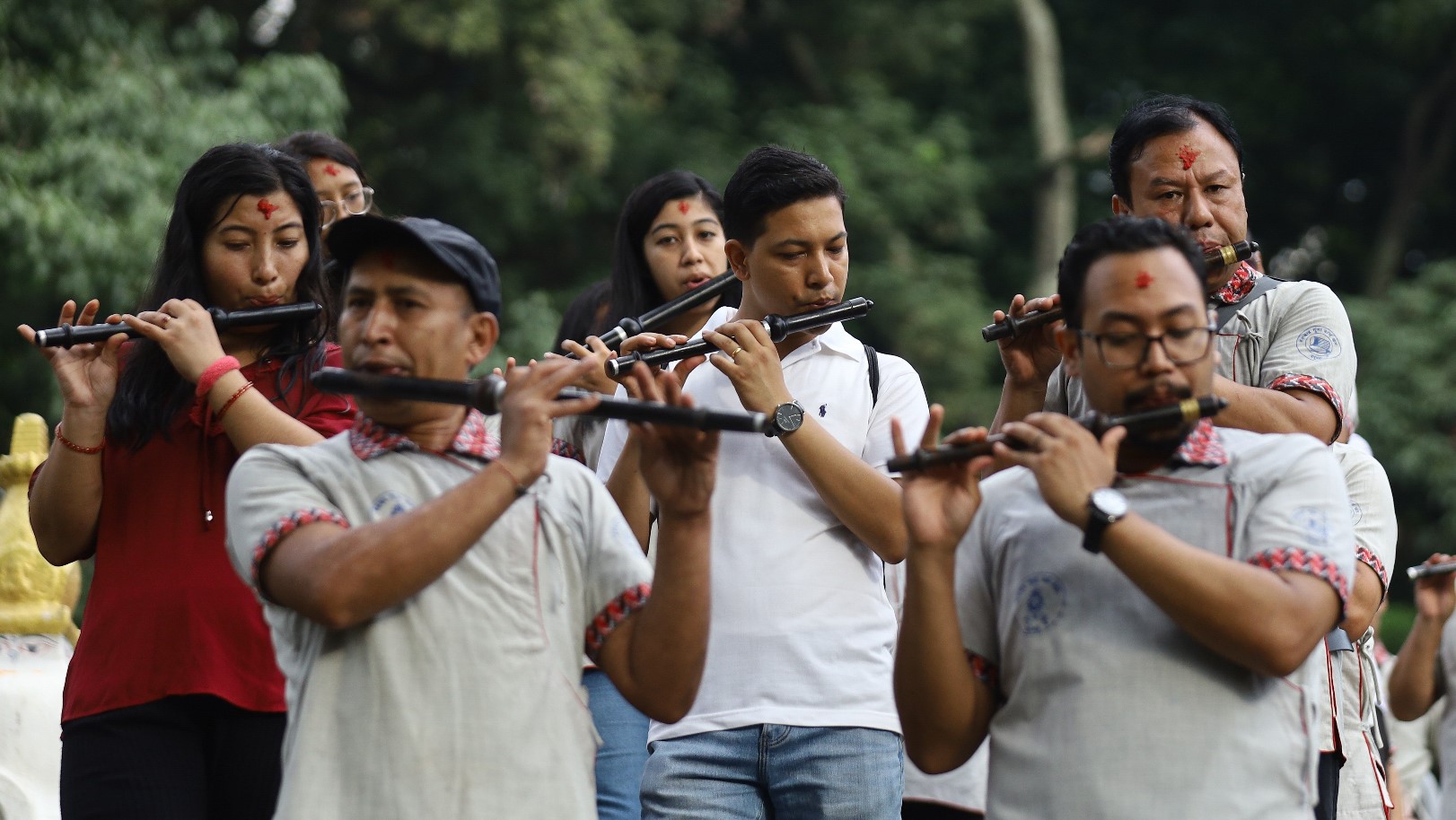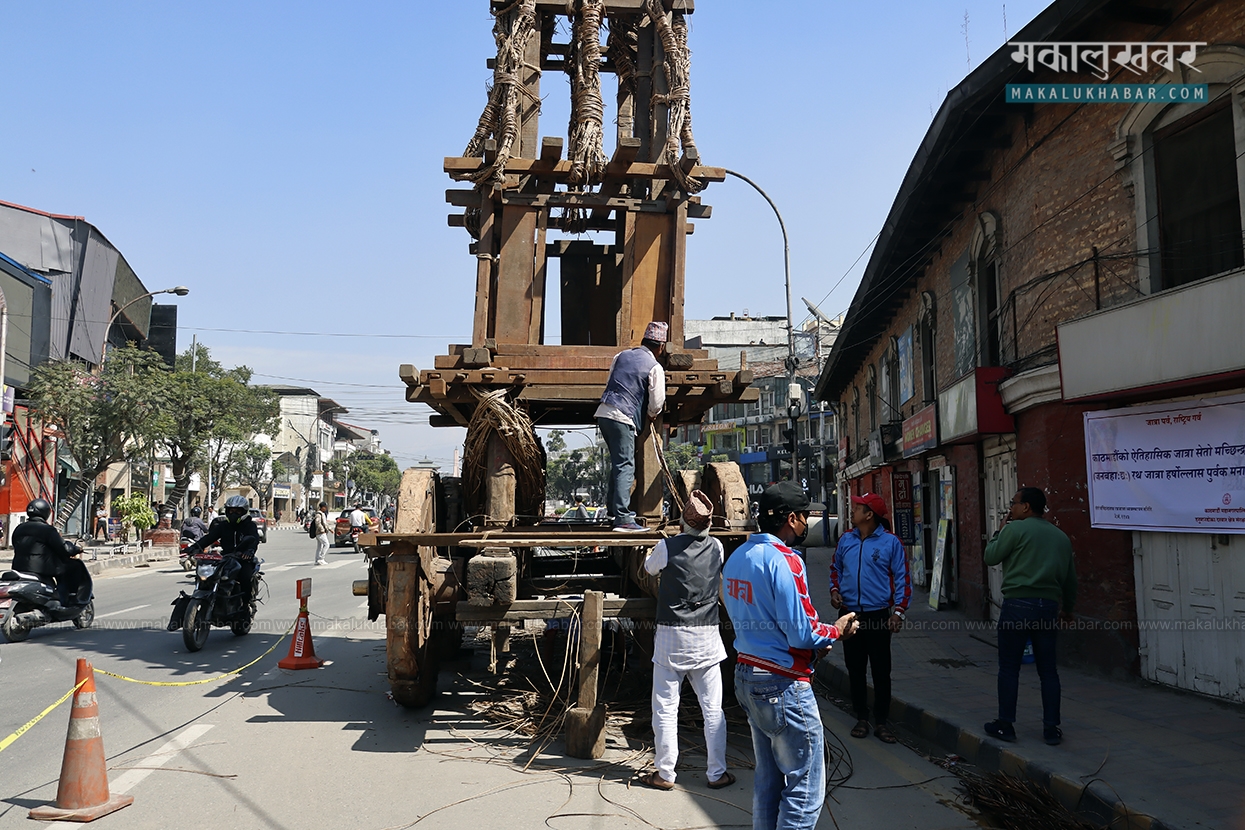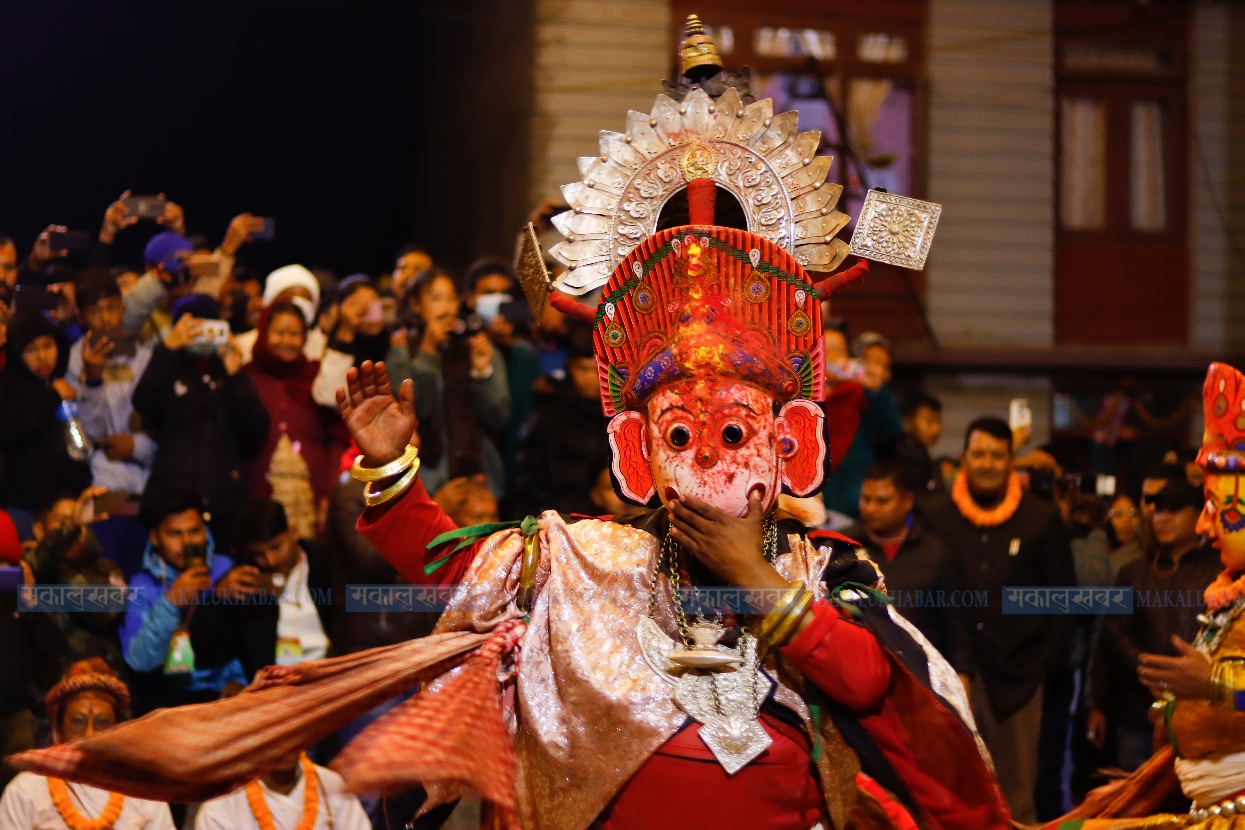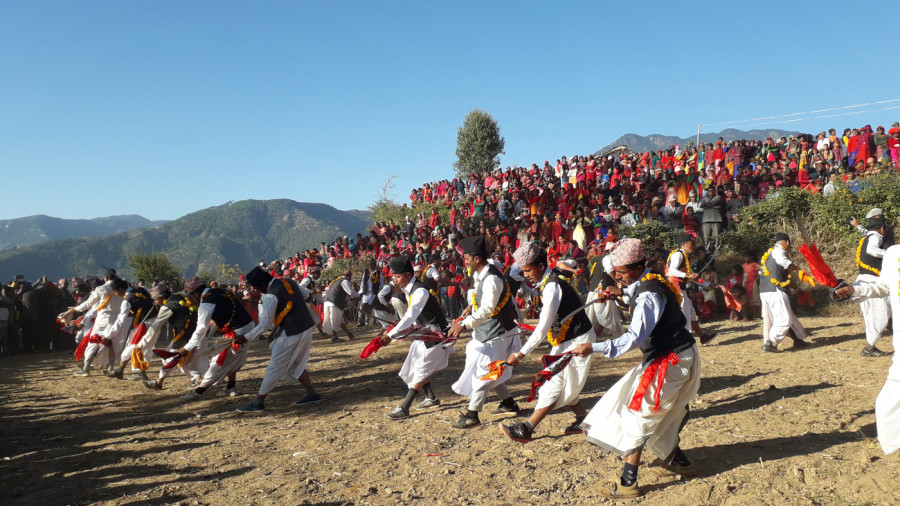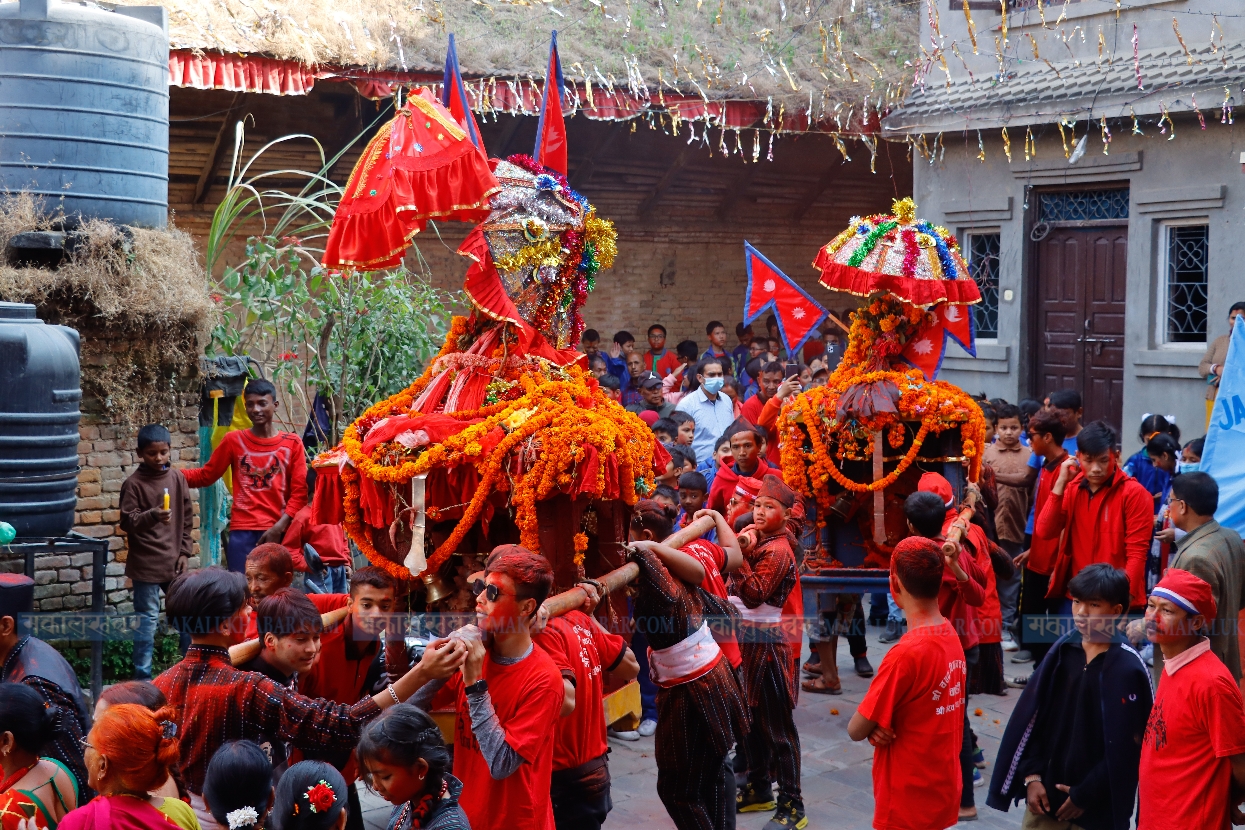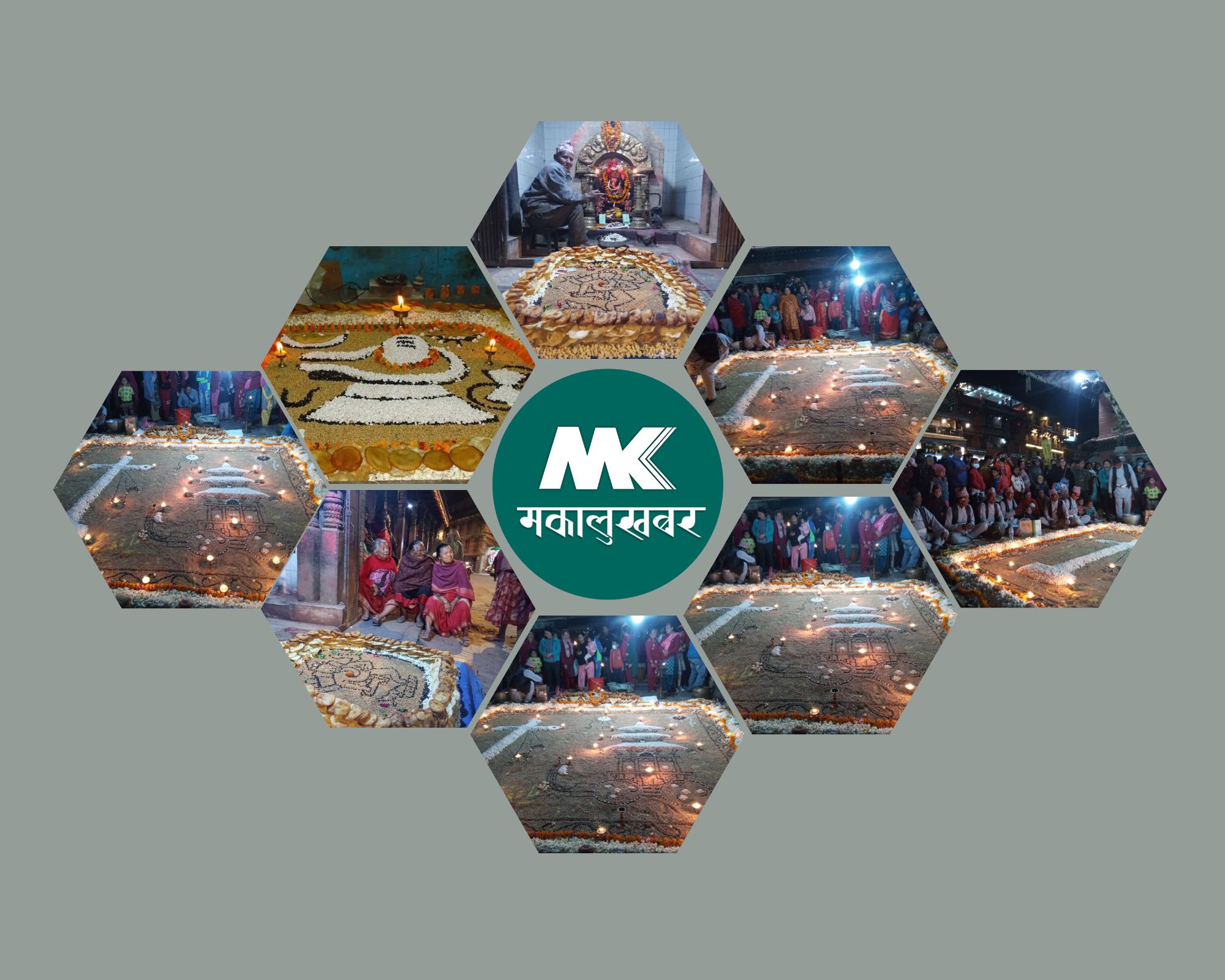Gokarne Aunsi (The Father’s Day) being celebrate today

KATHMANDU: SEPT. 7 – Today, the followers of Vedic Sanatan Dharma are celebrating the Kushe Aunsi festival, which is celebrated every year on the day of Bhadra Krishna Aunsi.
Father’s Day is also known as Kushe Aunsi or Pitri Tirpani Aunsi or Gokarne Aunsi. This day Nepali people pay homage to their father with their favourite food, clothing and other dad’s favourite stuff.
Mukh Herne means “to allow someone as our relative or give respect or to recognize the achievement of someone”.
This is a special day, we recognize and pay respect to our father for his care and love to us (his children and family) during his life. Hence, this day is called “Babu ko Mukh Herne din”. The literal meaning of Mukh Herne is to see someone’s face.
How do Nepalese celebrate Father’s Day
Nepal has more than 70 ethnic groups with almost all have their own tradition and languages. The people of different communities and tribe have their own way of celebrating father’s day. Some communities celebrate it empty stomach early in the morning and some communities celebrate it in the evening.
Generally, father’s day refers to the day of sanctifying fatherhood. Notwithstanding, different nationalities celebrate it in different ways and days. But in Nepal, people celebrate it quite uniquely. They generally bring sweets, fruits, and other gifts to their fathers.
Plus, devouring it, they give the Sagun too. However, at the same time, they praised their fathers by touching their feet and putting on a tika. Touching feet are only liable to the sons not for the daughters. Since society assumes daughters as the kumari.
However, all the communities prepare foods and tasty feasts and serve them to their father. The celebration and fun of the festival depend upon the place, climate and ethnicity.
On Father’s day, he who has already lost his father remembers him giving Sida Daan to pandit (Sida is a holy mixture of rice grains and other pure food materials with clothes).
Some men in Kathmandu go to Gokarna (a place east in Kathmandu) to do the Sraddha or pinda daan to their deceased father and some do Shradha at home or at the near river or at any holy place nearby.
Kushe Aunsi
A plant, very important for puja and other religious events, is brought in-home on this day. The plant is worshipped and kept in a sacred location in the home. In Hindu tradition kush grass and Tulasi (Holy basil), peepal tree and shaligram (ammonite stone) are worshipped as the symbols of Lord Bishnu.
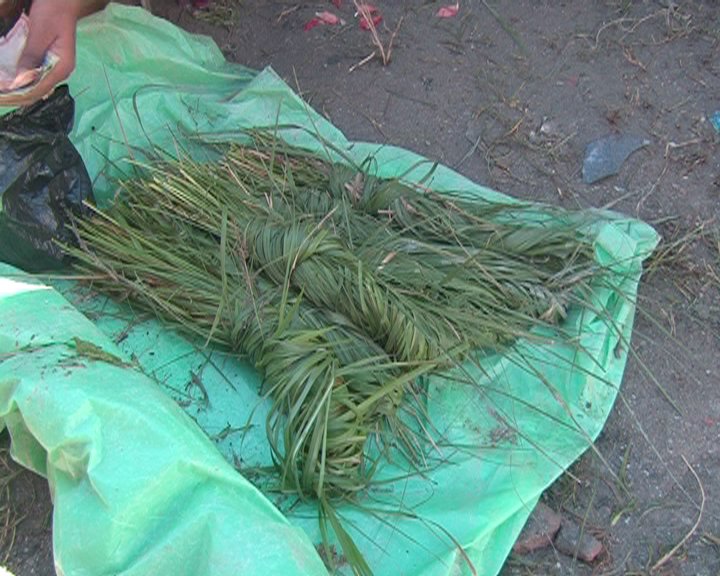
Poet Moti Ram Bhatta was born in 1923 BS on the Kushe Aunsi day. In addition to birth, he also died on the same day 30 years later in 1953 BS. Although Moti Ram had a very short life, he has a huge contribution to Nepali literature. He is credited for the introduction of Bhanubhakta Acharya – the first poet of the Nepali language. Moti Ram made Bhanu Bhakta and his book ‘Ramayan’ popular by publishing the book and marketing it as one of the most important books. Nepal government has honoured Moti Ram as Yug Kavi, the poet of this age.
Religious Beliefs
Ones Lord Shiva disguised himself as a one-horned deer and set out for a pleasure tour in the lush green woodland. He was so engrossed in the tour that he did not bother to come back to Kailash, his celestial home. This worried all the deities of heaven including Indra, Bharmha and Bishnu. They convened together and decided to make a joint effort to find him. They came across this very unique one-horned deer grazing freely in the forest whom Lord Bramha, the god of creation, immediately recognize to be Lord Shiva himself.
He tried to capture the deer by catching hold of the horn. But the deer escaped leaving behind the three fragments of the horn in his hand. It is said that, later on, of those three fragments, one went down to the underworld and another one up to heaven. The third one was enshrined at Gokarna and is now called Gokarneshwor Mahadev. The breaking of the legendary horn into three pieces symbolically represents the Hindu Trinity, or creative, Preservative and destructive elements of Nature.
According to some Hindu scriptures, the best time to offer Pinda (Lump of ground rice) to the pitris ( souls of the deceased father) is on Gokarna Aunsi. Then the pitris is said to grow very anxious and impatient to receive pinda from their son. Though ceremonially it is Father’s day, those whose fathers are still alive are advised not to make even a casual trip to Gokarneshwor on this particular day.
It is considered inauspicious and it is believed that those who do so may fall victim to some ill omens. This is definitely to indicate that fathers should be respected more in their own life than after their death. Thus Gokarna Aunsi seems to prove itself to be an occasion for all human beings to show their profound respect and love to their respective fathers, both dead and alive.
Gokarne Aunsi
Besides this, some people pronounce it as Bhadrapada Amavasya, somewhere, Pitri Tripani Aunsi exceedingly. Cause, the day is more important for those who unfortunately lost their fathers. Those who lost their beloved father, precisely for more than a year, go to the Gokarna of Kathmandu, on the very day.
Here, Gokarna is a holy temple of Lord Shiva, situated in the northeast corner of Kathmandu city. There, they take bathe and perform the yearly death ritual, Shraaddh. That’s why the day is pretty famous as Gokarna Aunsi too. However, people also prefer to go to Betrawati of Rasuwa and Bishnupaduaka of Dharan to do such death rituals.
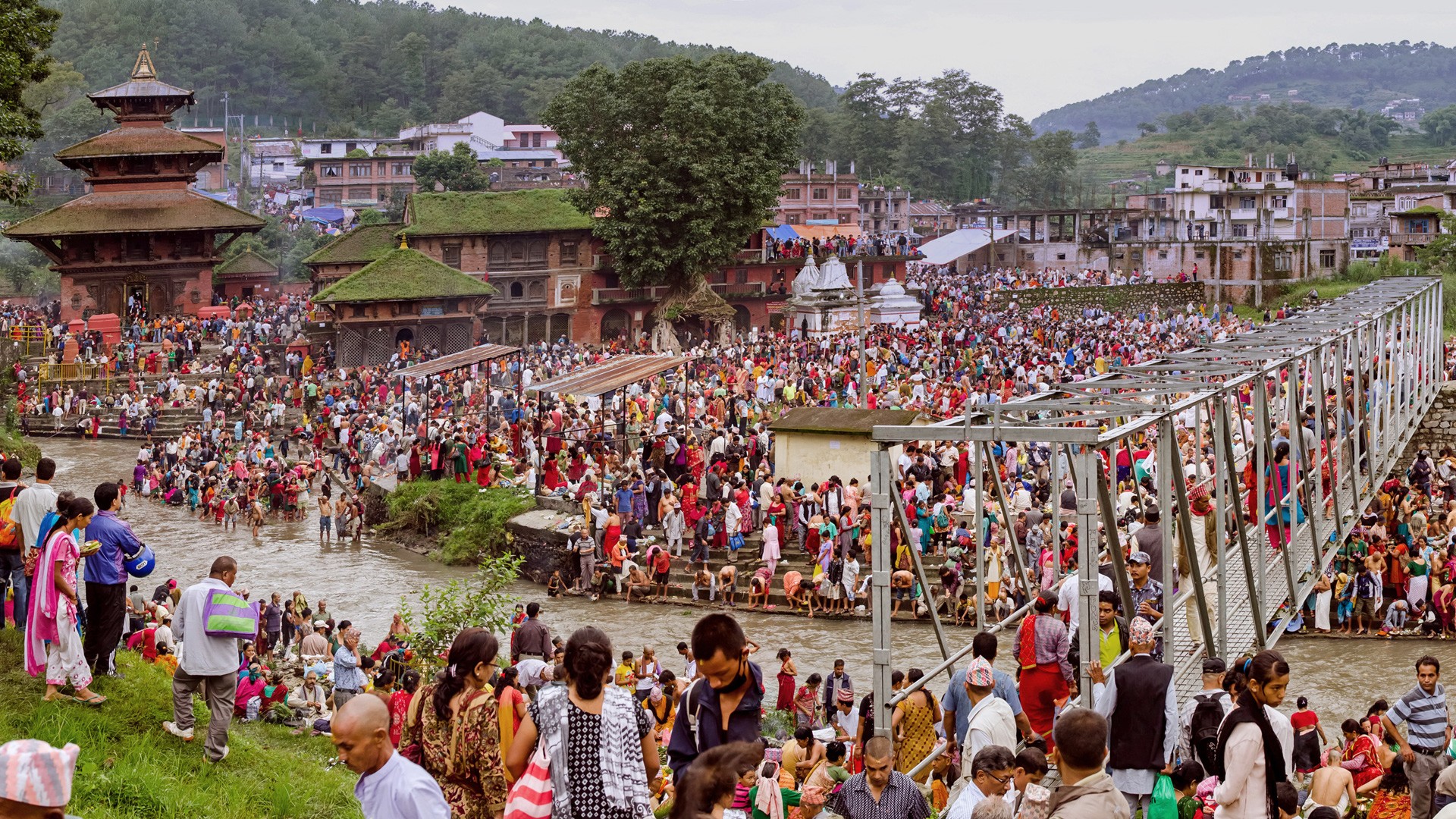
Whence, the day Aunsi somehow has a powerful impact on Nepalese society. There is actually a credo in Nepalese culture. That those who have their parents alive should not take bath on the day of Aunsi. They assume that it diminishes the life of their parents like whoever take bathe on that day.
Since the one, who has lost their parents must likely take bathe on this day.


